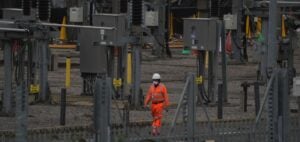The expiration of Contracts for Difference (CfD) across Europe is profoundly reshaping the financial profile of renewable assets. These mechanisms, designed to ensure stable revenues for green electricity producers, are giving way to full exposure to wholesale markets, with direct consequences on internal rates of return (IRR) and asset valuation.
End of a secured model and high financial leverage
CfDs enabled the transformation of capital-intensive projects into bankable investments through a contractually guaranteed remuneration over 15 to 20 years. According to simulations published by the Oxford Institute for Energy Studies, a 200 MW solar plant receiving a £65/MWh CfD could support up to 75% debt leverage, while posting an equity IRR above 10%.
However, the shareholder value was heavily back-loaded, with distributions concentrated after the end of the contract. This financial design implicitly relied on long-term stability assumptions for prices and volumes—assumptions now questioned by evolving market fundamentals and regulatory frameworks.
Rising risk as CfDs approach maturity
IRR analyses show that minor negative adjustments of -10% on wholesale prices, combined with a 1% drop in load factor and capture rate, are enough to push equity IRRs below 9%. The P5 – the fifth percentile worst-case scenario – then drops to 4%, or even negative in some simulated price trajectories.
Thirteen years after commissioning, as the CfD nears expiration, IRR distribution widens significantly. At this point, the same asset becomes much riskier without operational changes, due to growing sensitivity of post-CfD cash flows to market volatility.
Impact on financial decisions and secondary operations
Late-stage refinancing or hedging options, such as partial hedges of 30–90% over three rolling years or ten-year refinancing from year 14, can slightly improve the average IRR. However, they increase volatility, with the P5 dropping to -3%, making the structures challenging for lenders.
In this context, legacy holders of these assets—particularly infrastructure funds and highly-leveraged utilities—face difficult trade-offs: selling at a discount, injecting new capital, or restructuring by internalising market risk management.
Reshuffling of investor profiles and resale strategies
The exit of post-CfD assets from traditional portfolios is creating opportunities for new specialised entrants, notably “merchant” funds and trading houses. These actors accept higher volatility in exchange for elevated IRRs, as demonstrated by a year-13 entrant targeting a 12.3% IRR.
At the same time, major industrial buyers—especially data centres and electro-intensive sectors—are increasing their negotiating power in the power purchase agreement (PPA) market, leveraging producers’ need to secure a portion of their revenues over the long term.
Implications for governance and corporate strategy
The changing risk landscape forces companies to revise internal processes. The development of trading desks, redesign of KPIs focused on post-CfD value, and adjustments to remuneration policies are becoming essential. Future profitability depends on active management of the merchant phase.
Moreover, greenfield project backlogs may be affected if shareholders view in-portfolio assets as underperforming. This context could benefit developers with strong balance sheets or “asset-light” strategies less constrained by capital deployment.
Regulatory issues and support scheme stability
CfDs are now mandatory in state aid frameworks under the Climate, Energy and Environmental Aid Guidelines (CEEAG), but their contractual nature has weakened following emergency state interventions, such as the €180/MWh revenue cap and windfall profit taxes.
The combination of regulatory obligation and increased political flexibility creates a hybrid regime where future revenues depend as much on market prices as on unpredictable administrative decisions. In this setting, the perceived risk of regulated renewables is approaching that of highly controlled fossil fuel infrastructure.






















